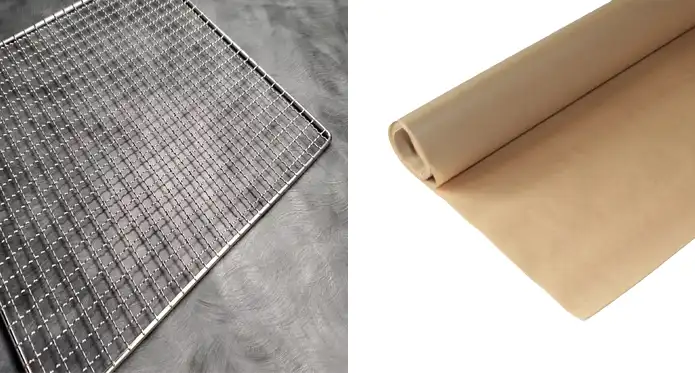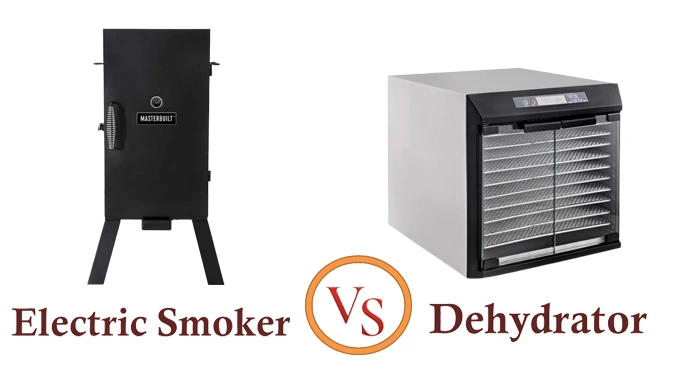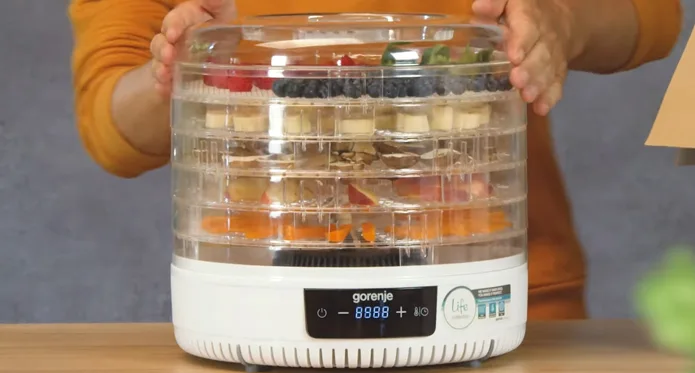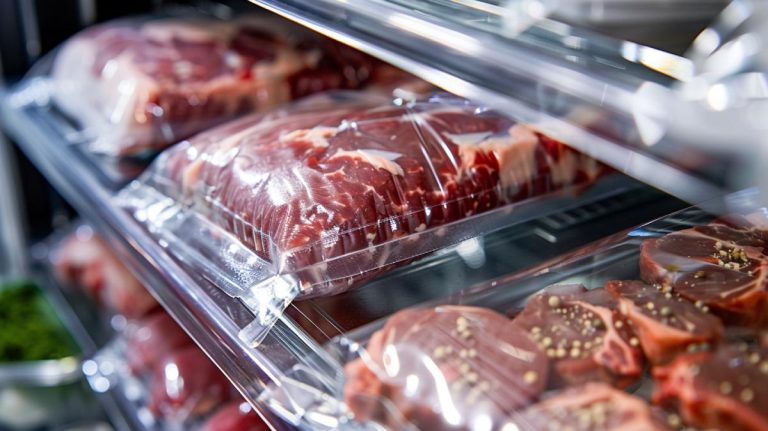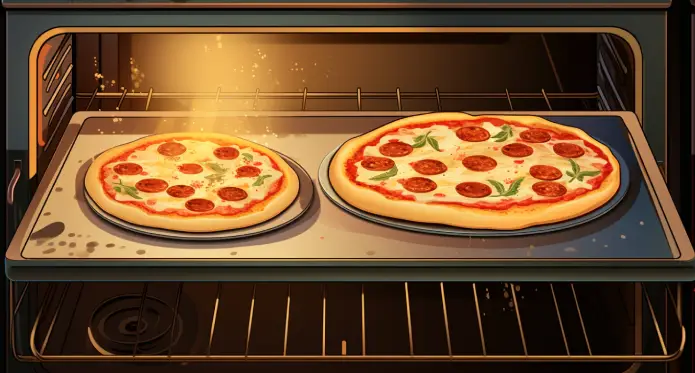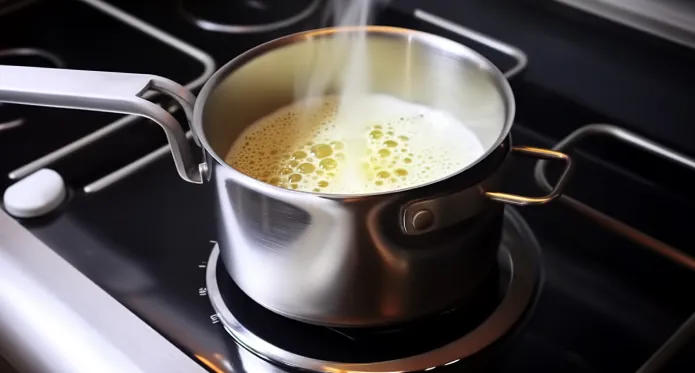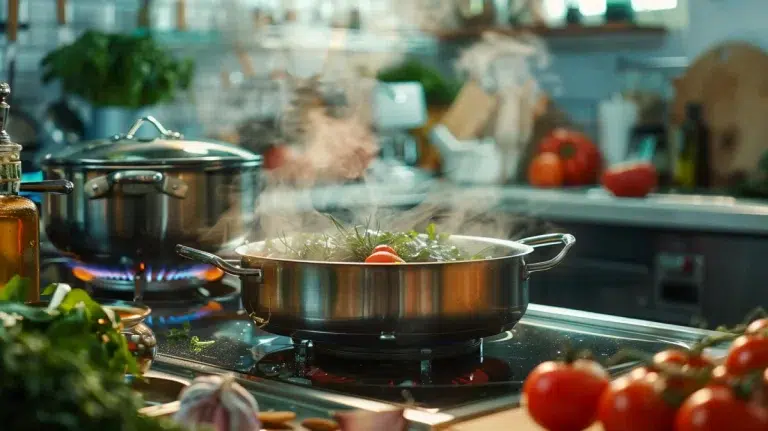Dehydrator Sheets vs Parchment Paper: Important 6 Factors
Food dehydration is a process that involves removing water from food so that it can be preserved. To make this process more efficient, many people use dehydrator sheets or parchment paper. Both of these products help speed up the dehydration process and are suitable for various foods and purposes.
Parchment paper is a trusty kitchen staple, from lining baking pans to wrapping up food. Compared to dehydrator sheets, these materials are durable and reusable. While parchment paper and dehydrator sheets share many similarities, dehydrator sheets are specifically designed for use in dehydrators.
Also, there are a few differences between them, including proper time and usage, so it’s essential to choose the right one for your needs. Continue reading to learn more about dehydrator sheets vs parchment paper.
Difference Between Dehydrator Sheets vs Parchment Paper?
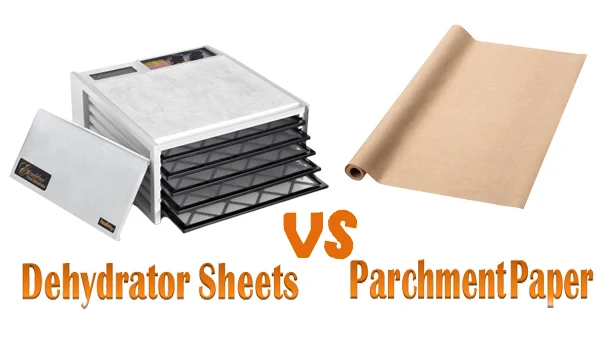
When it comes to parchment paper and dehydrator sheets, there are a few key differences between dehydrator sheets and parchment paper. These include:
1. Material: Parchment paper is made of paper that has been treated with chemicals or coated with silicone, making it less likely to stick to surfaces and burn. Dehydrator sheets, on the other hand, are made entirely of silicone or parchment paper.
2. Durability: Dehydrator sheets are made of a durable material that can be reused multiple times. This makes them a more economical option in the long run. Parchment paper is generally only used once and then thrown away. This makes it a more convenient option if you’re short on time.
3. Capabilities: They are made from heat-resistant nylon fabric, which can withstand temperatures up to 500 degrees Fahrenheit. Conversely, parchment paper is made from baking paper that is coated with silicone, which allows it to withstand 420 to 450 degrees Fahrenheit.
4. Useability: Dehydrator sheets are made from a material that is designed to be non-stick. This makes them ideal for dehydrators, as they will prevent sticking and make cleanup a breeze. Parchment paper is also non-stick, but it can be more difficult to remove from the dehydrator if it’s not properly greased.
5. Dimensions: Dehydrator sheets are typically only available in standard sizes. A Dehydrator sheet is typically 14 x 14 inches in size. Parchment paper comes in a variety of shapes and sizes. There are many types and sizes of parchment paper sheets, ranging from 4 x 4 inches to 16 x 24 inches.
6. Eco-Friendly: When choosing dehydrator sheets or parchment paper, it’s important to consider your needs and priorities. If you’re looking for an eco-friendly option, go with dehydrator sheets. If you’re looking for convenience, go with parchment paper.
Benefits of Using Dehydrator Sheets and Parchment Paper
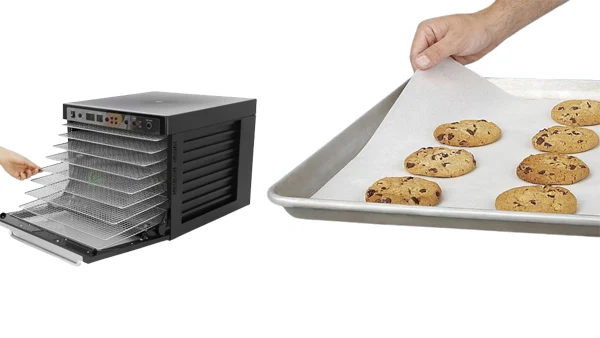
Meal preparation can be easier and quicker with dehydrator sheets and parchment paper. There are many benefits to using parchment paper and dehydrator sheets in the kitchen.
Here are the top five benefits of using dehydrator sheets:
1. Reduce Food Waste: Dehydrator sheets help to reduce food waste by allowing you to dehydrate foods that would otherwise go bad. By dehydrating fruits, vegetables, and herbs, you can extend their shelf life and enjoy them for longer.
2. Low-risk Spoiling Food: Dehydrator sheets are also ideal for dehydrating food because they create a low-risk environment for spoiling food. Unlike other methods of dehydrating food, such as air drying or sun drying, dehydrator sheets prevent mold and bacteria from growing on food.
3. Reheat Dehydrated Foods Easily: Dehydrator sheets also make it easy to reheat dehydrated foods. Simply place the dehydrated food on the sheet and put it in the oven or dehydrator at a low temperature. This will help preserve the food’s nutrients while allowing you to enjoy its flavor.
4. Convenient and Easy to Use: Dehydrator sheets are easy to use and convenient. Simply line your dehydrator tray with a sheet and load it with the food you want to dehydrate. Once the food is dried, you can just peel off the sheet and enjoy your dried food.
5. Keeps Food Fresh and Tasty: Dehydrator sheets help to keep food fresh and tasty by protecting it from oxidation. Oxidation is the process that causes food to brown and spoil. Dehydrator sheets help to prevent this by creating a barrier between the food and the air.
Parchment paper also has several benefits in the kitchen
The following are five advantages of parchment paper:
1. Avoid Sticking: Parchment paper provides a non-stick surface that simplifies removing food. The food will not stick to the parchment paper, and will slide right off of the baking sheet. This also prevents cookies from breaking and becoming crumbly.
2. Reduce Food Spreading: Parchment paper provides a bit of structure for the dough to cling to, resulting in fuller cookies that are less likely to spread out too much. This can lead to softer, more evenly cooked cookies overall.
3. Easy Cutting: You can achieve perfectly cut food with parchment paper. You can easily lift the entire sheet of treats out of the pan by lining a baking pan with parchment paper before baking. The sides of the pan do not get in the way of neat, straight cuts because of this.
4. Better Heat Distribution: Parchment paper helps distribute heat evenly throughout the food. This results in a more consistent bake and can help prevent burnt spots on cookies or other baked goods. Plus, parchment paper can help to insulate food, which is beneficial for items that are prone to overcooking or drying out.
5. Easier Cleanup: Parchment paper makes cleanup much more convenient. There is no need to scrub burnt-on food from the baking sheet because parchment paper does not adhere to the food. Simply remove the paper and throw it away. This saves time and energy in the kitchen.
When to Use Dehydrator Sheets and Parchment Paper?
Parchment paper and dehydrator sheets can be used for a variety of purposes. Below are some of the most common uses for dehydrator sheets and parchment paper.
Dehydrator Sheets:
Drying Fruits and Vegetables: Dehydrator sheets make it easy to dry them at home. Simply slice the produce thin, arrange it on the dehydrator sheets, and set the dehydrator to the desired temperature.
Making Jerky: Dehydrator sheets are also perfect for making homemade beef jerky. Just slice the meat thinly, arrange it on the sheets, and dehydrate according to your recipe. The non-stick material ensures that the meat doesn’t stick to the dehydrator, and it makes cleanup a breeze.
Making Fruit Leather: Dehydrator sheets are the perfect tool for making fruit leather. Simply spread a thin layer of puréed fruit on the sheet, and dehydrate until dry. The non-stick material prevents sticking and makes it easy to remove the fruit leather from the sheet.
Parchment Paper:
Baking: Parchment paper ensures that delicate baked goods don’t stick to surfaces, and it also prevents them from browning too quickly. Line baking sheets with parchment when baking cookies, pastries, or anything else that might stick or burn.
Rolling out dough: Parchment makes an excellent surface for rolling out pastry dough or pizza dough. The paper prevents sticking and streamlines cleanup. Just flour the parchment, roll out the dough, and then transfer the whole sheet – parchment and all – to the oven.
Wrapping food: You can use parchment paper rather than aluminum foil to wrap up food for storage. This is especially handy for foods that might react with foil, like acidic sauces or fresh herbs. When ready to eat, just peel off the parchment and enjoy.
Can I Use Parchment Paper Instead of Dehydrator Sheets?
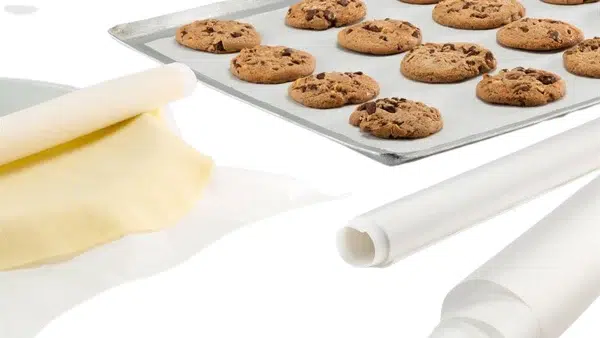
When dehydrating foods, parchment paper can be used instead of dehydrator sheets. Parchment paper is not necessary for the dehydrating process, but it can help to prevent sticking and make cleanup easier. Be sure to use unbleached parchment paper for food dehydrating.
If the parchment paper is too thick, it will take longer for the food to dehydrate. Cut the parchment paper to fit the dehydrator tray, leaving a slight overhang. Place the food on the parchment paper and then load the tray into the dehydrator.
It is perfectly fine to dehydrate most foods without parchment paper. So, heck on the food periodically to ensure it is drying evenly. When the food is fully dehydrated, remove it from the tray and allow it to cool completely before storing it.
Can You Make Jerky on Parchment Paper?
You can make jerky using parchment paper when dehydrating in the oven.
Jerky is a delicious and convenient snack that can be made at home with just a few simple ingredients. The key to making great jerky is selecting the proper cut of meat and getting the correct seasoning balance.
Once you have those two things sorted, the process is quite straightforward. Using an oven to dry your jerky, you can line the baking sheet with parchment paper. For baking paper jerky, simply place the parchment paper on a baking sheet and arrange your strips of meat or vegetables on top.
Then, bake the jerky according to your recipe. The parchment paper will keep things from sticking and burning, and it will also make cleanup easy. So if you’re looking for an easy way to make jerky in an oven, parchment paper is the way to go.
Will Fruit Leather Sticking to Parchment Paper?
Fruit leather will stick to parchment paper unless you spread it on the proper surface. Healthy and delicious, fruit leather makes a great snack. It’s made by spreading pureed fruit onto a flat surface and then drying it out in the sun or in a dehydrator.
Anyone who has ever made fruit leather knows that it can be a sticky business. The sweet, sticky fruit puree can quickly adhere to countertops, floors, and, most frustrating of all, parchment paper. Luckily, there are a few simple tips to prevent the fruit leather from sticking.
Before spreading the puree on the parchment paper, ensure it is completely dry. If even a drop of moisture gets on the paper, it will create a sticky film that the fruit leather will adhere to.
A non-stick cooking spray or oil can also be used to lightly grease parchment paper. Be sure to spread the puree evenly and thinly on the parchment paper. If the puree is too thick, it will be more likely to stick. This will create a barrier between the fruit leather and the paper, preventing any sticking.
Is Parchment Paper the Same As Baking Paper?
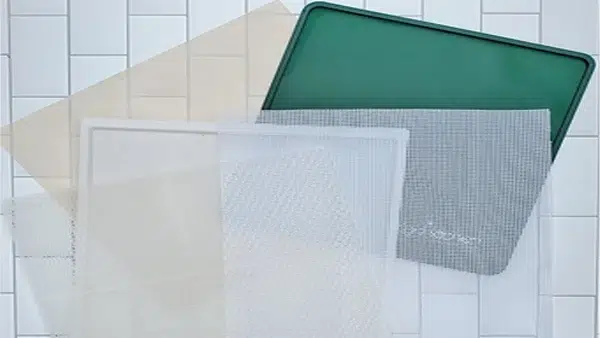
Parchment paper and baking paper are actually the same things. Both are made from a type of paper that is coated with heat-resistant silicone, making them ideal for use in the kitchen. Parchment paper is often used for baking, as it helps to prevent sticking and makes cleanup a breeze.
It can also be used for lining cake pans, cookie sheets, and other bakeware. Baking paper can also be used for cooking, as the paper helps reduce sticking and simplify cleanup. Also, it can be used for wrapping food, such as fish or vegetables, before cooking.
So whether you call it parchment paper or baking paper, this versatile kitchen helper is sure to come in handy.
Which One is Better: Dehydrator Sheets or Parchment Paper?
There is no clear answer as to which one is better. Both dehydrator sheets and parchment paper have their own unique benefits that make them ideal for different situations, so it really comes down to what you value most in the kitchen.
From above, we can see that both have their pros and cons, If you are looking to reduce food waste, then dehydrator sheets are the way to go. You should use parchment paper when baking or cutting foods if you want consistent results.
As for which one is best suited to your needs and preferences, it depends on your circumstances. So, consider all the factors before making your decision.
Topics Worth Exploring:

